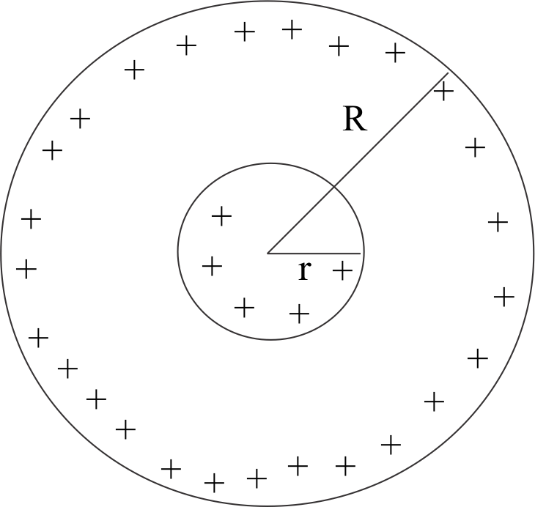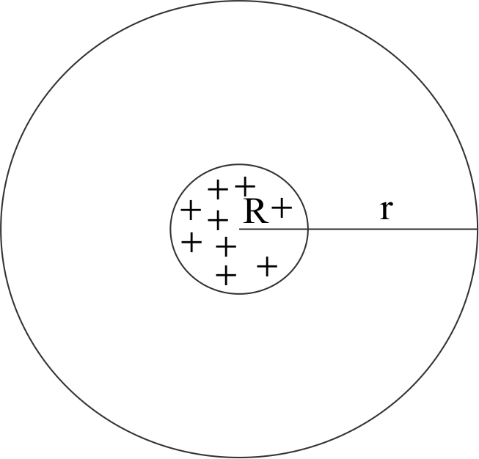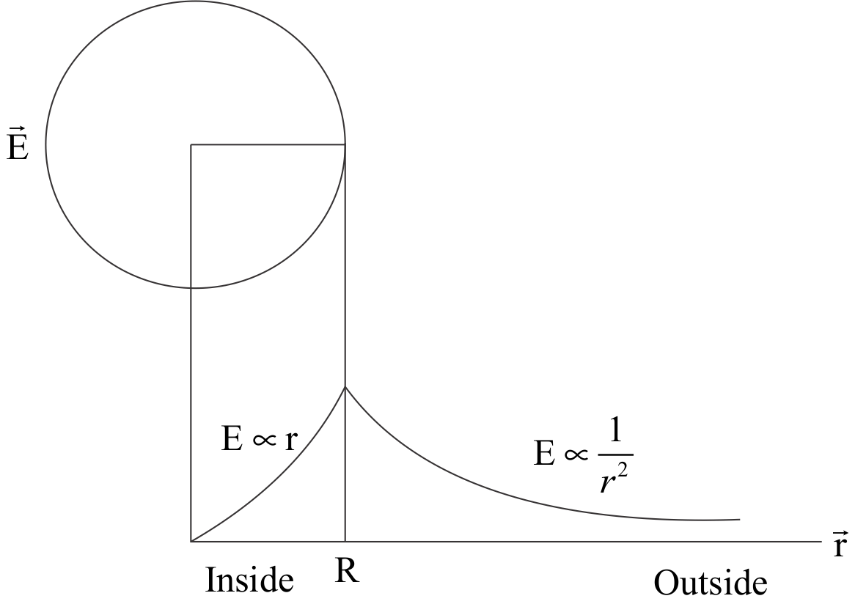Question
Question: Electric field due to uniformly charged sphere....
Electric field due to uniformly charged sphere.
Solution
This is the case of solid non-conducting spheres. We will have three cases associated with it . They are : electric fields inside the sphere, on the surface, outside the sphere .
Apply the gauss theorem to find the electric field at the three different places.
Complete step by step solution:
Consider a charged solid sphere of radius R and charge q which is uniformly distributed over the sphere. We will use Gauss Theorem to calculate electric fields. If ϕ be the electric flux and Q be the charge then :
ε0ϕ=Qenclosed
Also , electric flux=electric field X area of the enclosed surface : ϕ=EA
Case I- Inside the sphere (r<R)

The charge distribution is uniform . Volume density will be the same. Let the charge enclosed by a circle of radius r be q′ . Since volume density is same then-
34πr3q′=34πR3q q′=qR3r3
Applying Gauss Theorem here-
ϕ=E4πr2 ε0Qenclosed=E4πr2 ε0q′=E4πr2 ε0q×R3r3=E4πr2 E=4πε01×R3qr
This is the electric field inside the charged sphere .
Case II: On the surface (r=R)
In the above case we have calculated the electric field inside the sphere. In that formula we will put (r=R) , so evaluate the electric field on the surface of the sphere .
E=4πε01×R3qr E=4πε01×R3qR E=4πε01×R2q
This is the electric field on the surface.
Case III: Outside the sphere (r>R)

We will apply Gauss theorem in this too.
ϕ=EA ε0q=E4πr2 E=4πε01×r2q
This is the electric field outside the sphere.
If we plot these variations on a graph we will get the following graph:

Note: Since this is a solid sphere , it has charge inside it as well and that is why the electric field is non zero. In case of a hollow spherical shell, the electric field inside the shell is zero .
